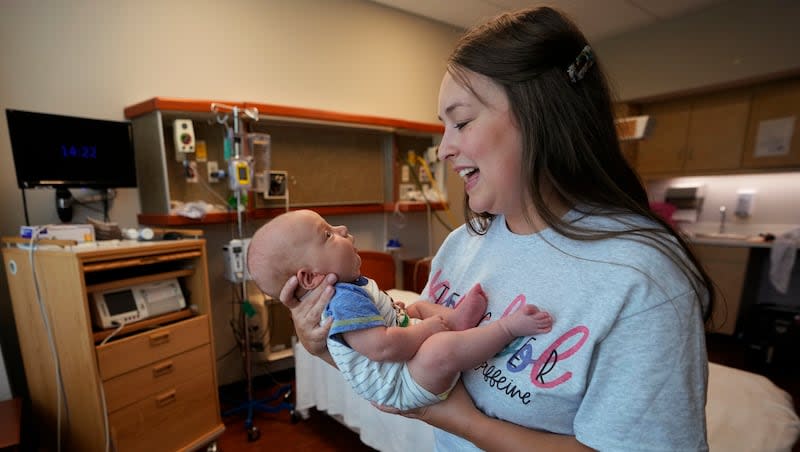Opinion: Beware of a falling population

I don’t like stories such as the one LendingTree published this week, estimating how much it costs to raise a child. Those with young kids told surveyors it cost an average of $11,505 per child.
Any enterprising parent will tell you this depends on resourcefulness and a bunch of other factors. Plus, money isn’t the point.
Nor do I like stories such as the one in Time this week that focuses on parents who regret having had children. It came with a graphic showing a frazzled mother driving a car with a crying child visible in the rearview mirror.
First, the screaming-child years are a blip in time compared with the much more plentiful years of joy I have experienced interacting with, and learning from, my grown children. Regrets? No, I don’t want to imagine my life without them.
Second, and most important, people may read these reports and become even less inclined than they already are to have children. And that could be disastrous for the nation and the planet. This is becoming serious business.
At about the same time both these stories emerged, The Economist in Great Britain published a piece outlining why the U.S. is “ill-suited to handle a falling population.” And yet, that’s exactly the direction in which we’re heading.
The magazine said, “Between 2010 and 2020 over half the country’s counties, home to a quarter of Americans, lost population. Over the coming decades still more will, because America’s population is growing more slowly. The change will be wrenching, because of America’s demographic and administrative peculiarities.”
For one thing, Americans move around a lot more than Europeans do. And so, Nevada is now 10 times as populous as it was 60 years ago, and Texas has tripled. Utah has gone from 900,000 people in 1960 to 3.4 million today. This was OK when the entire nation was growing, The Economist said. But, as Beth Jarosz of the Population Reference Bureau put it, “If the population as a whole is barely increasing, for one region to grow fast, another must contract.”
And contraction is ugly.
When people leave, businesses struggle, then close. Homes sit vacant and home prices drop. Jobs disappear. Schools have trouble maintaining facilities and programs.
As I’ve written before, capitalism relies on steady growth to maximize outputs and increase markets through competition. If the nation begins contracting, paying off the national debt becomes much harder. Social Security would struggle to continue, as a lack of young workers makes it hard to fund benefits for a large population of retirees. Funding a strong military, and keeping it stocked with plenty of young soldiers, becomes a challenge that threatens U.S. influence abroad.
As the Deseret News reported last week, the nation’s fertility rate reached an all-time low in 2023, at an estimated rate of 1.62 children for every woman. Experts consider 2.1 to be the replacement rate. The general fertility rate dropped among most races and ethnic groups.
This continues a decades-long downward trend. Fertility used to go up during good economic times and down during bad years. That correlation has disappeared. Other than stubborn inflation, the economy was strong last year, according to most indicators. GDP grew by 3.4% in the fourth quarter, according to the U.S. Bureau of Economic Analysis. And yet, fewer babies.
The Economist noted that only two states, Mississippi and West Virginia, lost population between 2010 and 2020. However, 17 of them shrank in 2021. That was spurred by the pandemic, but trends show “these contractions are in all likelihood a sign of things to come.”
The United States isn’t alone. Falling fertility rates already are at crisis levels in some nations.
As I have noted in the past, Japan has the world’s oldest society, with more than 35% of its population predicted to be 65-plus by 2050. A 2019 report by Bloomberg.com documented how Japan’s smaller towns “appear to be locked into a demographic death spiral,” with 869 cities at risk of disappearing by 2040.
Demographers I’ve talked to say the world’s population will continue to rise until the last generation that reproduced at a replacement rate dies away. The global downward spiral may begin by the latter part of this century.
It’s true that parenting isn’t easy. Despite the joy I get from my grown children, being a dad presents challenges and worries at any age.
But an essay on parenting in theconversation.com noted that having children can “lead to a profound form of wellbeing called eudaimonic wellbeing. This is the feeling you have lived a life worth living, which is distinct from short-term happiness.”
I fear for a rising generation that misses out on this form of well-being. But I fear more for the United States, and the world, should a falling population take hold in a serious way.

